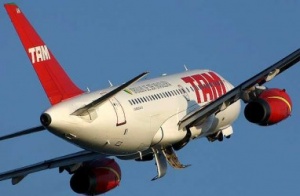TAM to merge with rival LAN

Brazilian carrier TAM Linhas Aereas has outlined plans to merge with LAN Airlines of Chile to create the largest carrier in South America.
As demand for travel in the region continues to increase, the rivals have signed a memorandum of understanding outlining intentions to combine their holdings under a single parent entity.
While the merger would create up to $400 million annually in expected synergies, LAN and TAM would continue to operate as independent brands, with headquarters in both Santiago and Sao Paulo.
“This is the completion of the vision of our founder, Captain Rolim, who believed that in an open skies market, a large Latin American airline group would provide much more competitive services to our passengers and cargo customers,” explained TAM chief executive Marco Bologna.
“Combining our strengths and complementary networks will bring great benefits to our customers, employees, shareholders and Latin America.”
The deal would create the world’s 11th largest carrier by passengers.
LAN is already the region’s biggest airline by market value while TAM is the largest by revenue.
ADVERTISEMENT
All-Stock Trade
The all-stock transaction would consolidate the economic interests of LAN and TAM under a single parent entity while satisfying the foreign ownership and control requirements of each country where the new airline operated.
LAN is set to buy TAM with stock, with TAM investors getting 0.9 LAN share for each TAM share held.
As a result of the deal LAN would have 70 per cent of the new combined carrier, to be called LATAM Airlines Group S.A (LATAM).
LAN Airlines S.A. would be renamed LATAM and would serve as a parent company that will align activities for all group holdings.
Any transaction is subject to both parties entering into a binding definitive agreement, including corporate and shareholder approvals as well as sanction from regulatory.
Global Player
The combined airline group would provide passenger services to more than 115 destinations in 23 countries while providing cargo services throughout Latin America and across much of the globe.
The airlines of the group would operate a fleet of more than 220 aircraft, and have more than 40,000 employees.
In 2009 the carriers had combined revenues of $8.5 billion, carried more than 45 million passengers and carried combined cargo of 832,000 tons.
The group would have the potential to compete with the leading airline groups in the world in terms of size, profitability and market reach.

